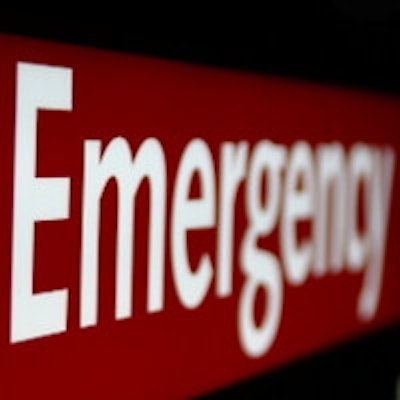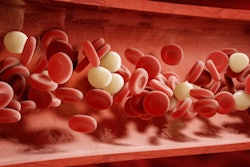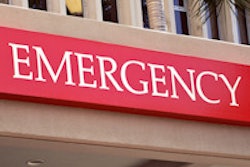
Policymakers continue to focus on how emergency department (ED) imaging use rates keep increasing, implying that the uptick is due to overutilization. But there may be other reasons for the growth, and patients may actually benefit, according to a new study published January 23 in the Journal of the American College of Radiology.
As imaging technology has become more sophisticated, so has emergency patient care, wrote lead author Dr. Vignesh Arasu, from the University of California, San Francisco, and colleagues from Massachusetts General Hospital (MGH). Imaging makes emergency care more accurate and efficient, and as such, it is now a vital part of the emergency room.
 Dr. Vignesh Arasu from the University of California, San Francisco.
Dr. Vignesh Arasu from the University of California, San Francisco.Yet even though imaging improves diagnostic accuracy, use of the technology in the ED has been criticized as replacing physical examination and/or cheaper diagnostic examinations, increasing radiation exposure, and boosting defensive medicine practices, the group wrote.
"In the literature, it's been noted that emergency imaging use has been increasing since the early 1990s -- and this is despite a lot of effort on the part of the radiology community to curb overuse with campaigns such as Choosing Wisely and Image Gently," Arasu told AuntMinnie.com. "But the emergency department is a unique environment."
The study was an attempt to explore exactly what is happening in the emergency department, using data from MGH. Arasu and colleagues found that overall ED imaging growth at MGH slowed between 2004 and 2012, which suggests that the recent increase in emergency diagnostic imaging reported in the literature is due to more ED patient visits rather than overutilization, they wrote (JACR, January 23, 2015).
The researchers reviewed aggregated billing data from 1,458,230 diagnostic radiologic exams ordered for emergency visits between 1996 and 2012. They calculated the growth rate as the average annual percentage change in imaging examinations per ED visits. They then split the time period into two halves, from 1996 to 2003 and from 2004 to 2012.
"We chose to divide the study periods in this way to compare average historic growth trends to recent growth trends," Arasu and colleagues wrote. "The time period of 2004 to 2012 was when we expected to see the effects of system-wide changes to curb utilization, including widespread imaging guidelines, incentive contracts, and the implementation of computerized decision support."
MGH saw dramatic growth in CT and MR use between 1996 and 2003, according to Arasu's team. Helical CT began to be used in the early 1990s, and its benefits made the modality a primary diagnostic tool in the emergency department. In addition, around the year 2000, CT replaced nuclear medicine and pulmonary angiography for the diagnosis of pulmonary embolism. But from 2004 to 2012, no new major clinical indications for advanced imaging developed, the authors wrote.
The overall rate of growth of total ED imaging exams decreased between the two study periods, Arasu and colleagues found. By modality, CT and MR exam growth rates decreased significantly, while there was no significant change in the growth rates for ultrasound and x-ray.
| Average annual growth rate of imaging per ED visit | |||||
| 1996-2003 | 2004-2012 | p-value | |||
| Total imaging | 4 ± 4% | -2 ± 3% | 0.01 | ||
| CT | 15 ± 5% | -1 ± 6% | < 0.001 | ||
| MRI | 25 ± 21% | 0 ± 7% | 0.02 | ||
| X-ray | 1 ± 6% | -3 ± 2% | 0.25 | ||
| Ultrasound | 13 ± 10% | 4 ± 7% | 0.09 | ||
The rate at which MGH's emergency department uses imaging for patients may be higher overall, the authors wrote. Despite the fact that Massachusetts implemented universal healthcare in 2006 -- which may have shifted some ED encounters to other settings -- MGH has continued to see an increase in its ED visits.
"We have an increased rate of hospital admissions (25%) [compared to] the national average (13%) and consequently a higher rate of utilization," they wrote. "For example, in 2010, the proportion of ED visits in which CT was ordered at our institution was 29%, compared with the national average of 17%."
The study data also suggest that, more and more, emergency physicians are performing and interpreting bedside ultrasound themselves -- which may not be a bad thing, Arasu said. MGH's emergency department implemented an ultrasound training program for ED physicians in 2004; between that year and 2012, there was a decrease in the use of abdominal and pelvic CT and MR exams.
"There's a new kind of practice shift, with ED doctors doing their own ultrasound," Arasu told AuntMinnie.com. "But it's a triage tool that helps them better determine when patients actually need a CT or an MR and when they don't."
In any case, it's important to consider why imaging use rates increase: It's not always because unnecessary exams are being performed, the group wrote.
"Our [study] results may be explained by a slowing in new imaging indications, greater adherence to practice guidelines, and increased utilization of ultrasound," they concluded. "This implies that the recent growth of emergency diagnostic imaging may now be driven primarily by increasing ED patient visits rather than overutilization."



















